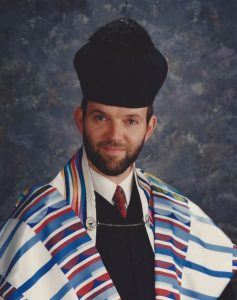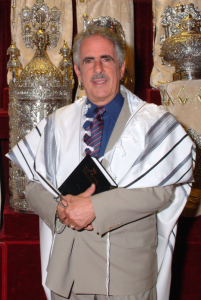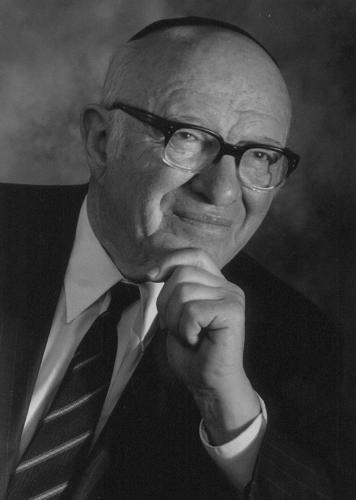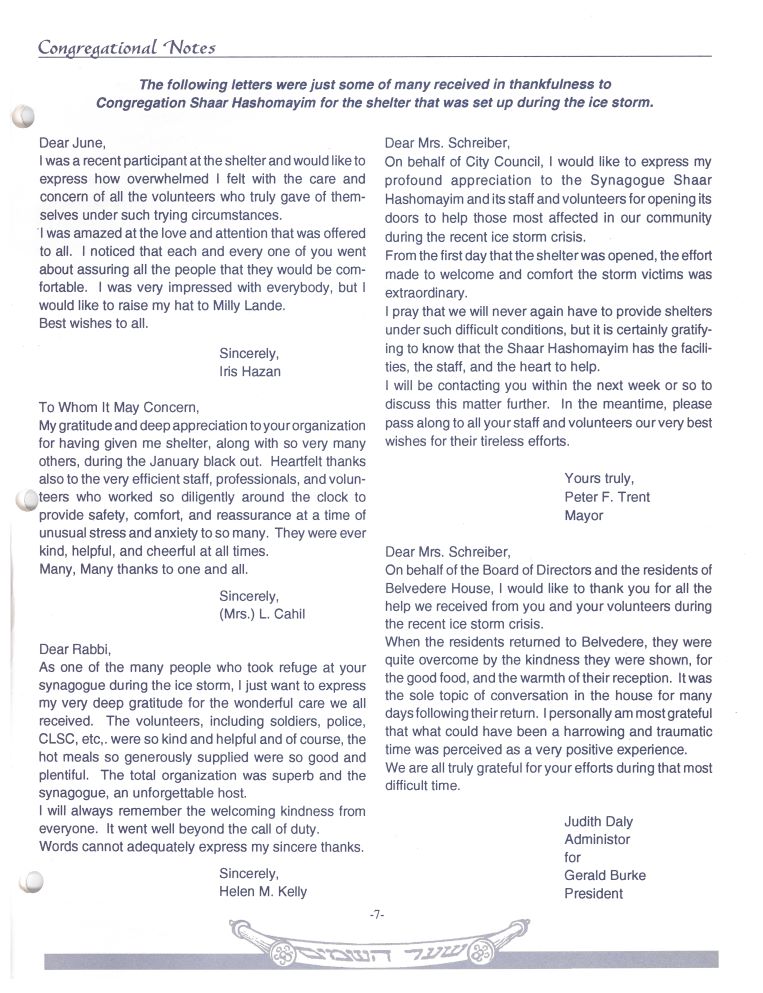Part 10: The End of the Millennium
In the decades leading up to the end of the millennium, there would be more changes in store for the Shaar.
Cantor Joseph Gross retired after many years of service and, in 1985, Cantor Sidney Dworkin took his stead, continuing to expand the synagogue’s musical offerings. Among the most popular programs he instituted was an annual “Cantor Dworkin and Friends” concert, which brought in numerous musical talents from Canada and abroad.
Not long after, yet another new face joined the Music Department: Stephen Glass began serving as the synagogue’s Musical Director in 1990.
Within his first two years, Glass breathed new life into the synagogue’s choir and musical repertoire, elevating them to their current standard of excellence. He created a Choral Society for both men and women, as well as children and teens choirs, in addition to composing numerous liturgical pieces and arrangements.
Around the same time, in 1993, Rabbi David Woolfson, who was serving as the synagogue’s ḥazzan sheini, would step into the new role of Ritual Director, rounding out the synagogue’s clergy.
While some chapters were beginning, others were coming to a close. In 1990, Rabbi Shuchat officially informed the synagogue’s officers of his intention to retire. His retirement date was set for October 1993, and the Congregation held a beautiful event in tribute to their rabbi. Indeed, by the time he retired, he had served the Congregation for just under 50 years, making him the longest-serving rabbi in the synagogue’s history.
A Place of Sanctuary
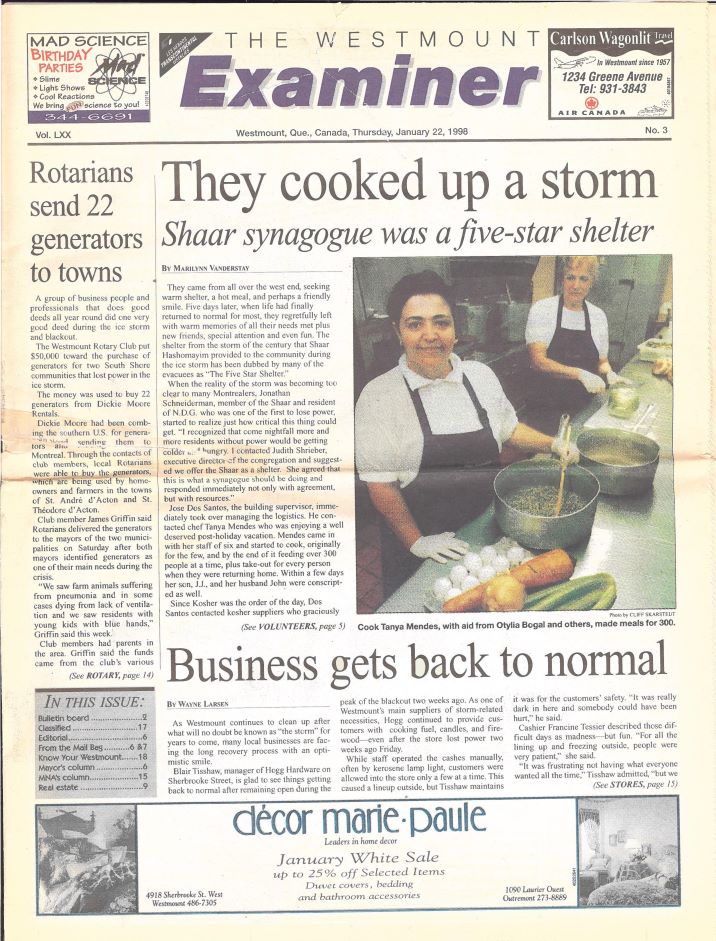
The front page of the Westmount Examiner (1935-2015) on Thursday, January 22, 1998 about the shelter provided at the Shaar during the Ice Storm.
In 1998, Montreal experienced one of the most severe winter storms on record: the infamous Ice Storm. The Shaar played a unique role in this crisis, serving as a place of refuge for many in the wider Westmount community, since it ran its own generator and hence never lost electrical power. The Shaar transformed its social hall into a shelter, where more than 250 people were housed. The whole synagogue mobilized to help out during this crisis: the kitchen, for instance, completely refocused its efforts to feeding all the people being sheltered. Remarkably, even during all of this, a previously-scheduled wedding was able to proceed seamlessly.


